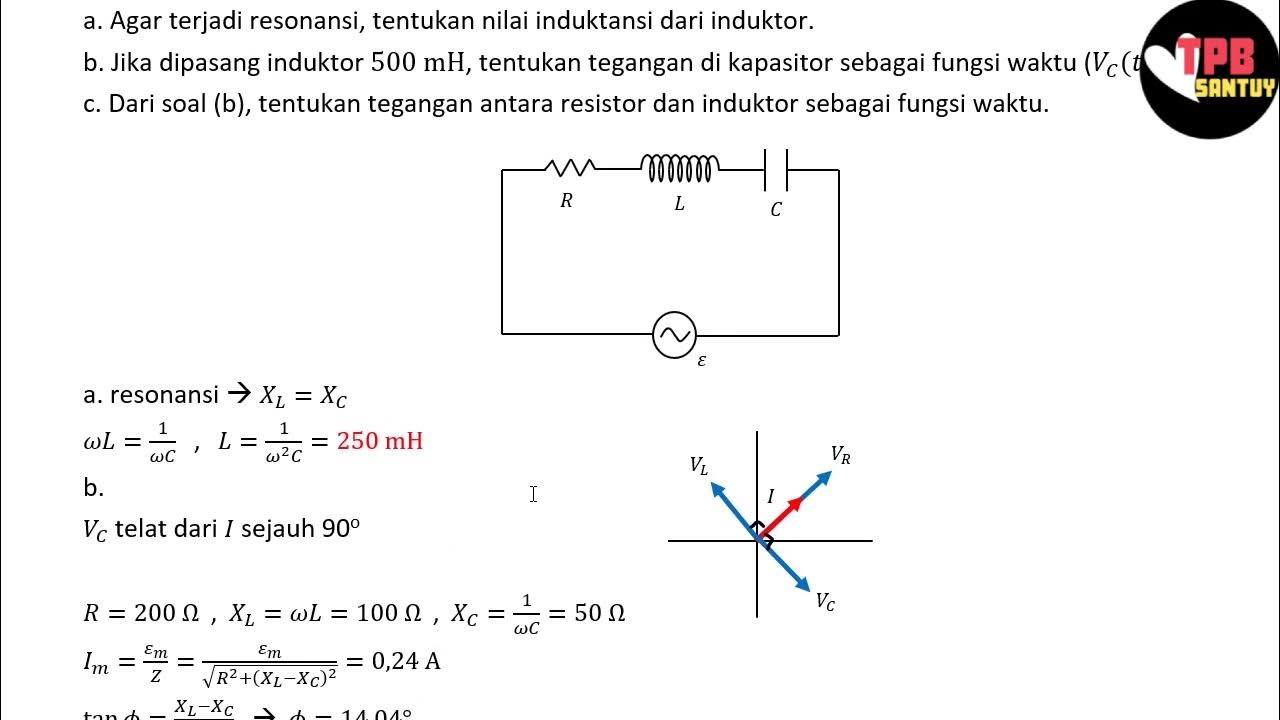Electronic and Circuits Week 1 Lecturer || Basic Concepts of Electronic Circuit
Summary
TLDRThis lecture provides an introduction to the fundamentals of electronics and circuits, covering basic concepts such as electrical circuits, current types (static and current electricity), and key components like resistors, capacitors, and inductors. It explains the flow of electrons, the difference between conventional and electronic currents, and the concept of potential difference (voltage). Additionally, it touches on power and energy calculations, the law of conservation of energy, and the importance of electrical units like amperes, volts, and kilowatt-hours. This session sets the stage for deeper exploration of electrical engineering principles.
Takeaways
- 😀 Electrical circuits are interconnections of electrical elements connected in a closed path by conductors.
- 😀 A basic electric circuit includes components like voltage sources, resistors, capacitors, and inductors.
- 😀 Charge is the fundamental electrical property of atomic particles, and its unit is Coulomb (C).
- 😀 The charge on an electron is -1.602 × 10^-19 Coulomb, and one Coulomb of charge equals 6.24 × 10^18 electrons.
- 😀 Static electricity involves stationary charges, while current electricity involves the flow of charges from high to low potential.
- 😀 Electric current (I) is the rate of flow of electric charge (Q), and its unit is Ampere (A).
- 😀 Direct current (DC) involves constant current, while alternating current (AC) varies periodically with time.
- 😀 Voltage (V) or potential difference is the energy transferred per unit charge as it moves through a component.
- 😀 Power (P) is the rate of energy transfer and is calculated as P = V × I (Voltage × Current).
- 😀 Electrical energy is the work done by the flow of charge through a circuit, and it is measured in Joules or kilowatt-hours (kWh).
- 😀 The law of conservation of energy states that the total power supplied by a source in a circuit must equal the total power absorbed by the components.
Q & A
What is the primary focus of the lecture discussed in the transcript?
-The lecture focuses on fundamental concepts in circuits and electronics, including topics such as basic resistive circuits, diodes, bipolar junction transistors (BJTs), Boolean algebra, and circuit analysis.
What are the key components involved in a basic electrical circuit as described in the transcript?
-A basic electrical circuit consists of a voltage source (e.g., a battery), resistive components, inductive components (e.g., inductors, capacitors), and conductors (wires) that connect the components in a closed loop.
What is the definition of an electric circuit?
-An electric circuit is an interconnection of electrical elements, such as resistors, capacitors, and inductors, connected in a closed path by conductors.
How is electric charge defined in the context of this lecture?
-Electric charge refers to the electrical properties of atomic particles, and it is measured in coulombs. One coulomb is equivalent to 6.24 x 10^18 electrons.
What is the difference between static electricity and current electricity?
-Static electricity refers to stationary charges that accumulate on an insulating material, while current electricity involves the flow of electrons from higher potential to lower potential, creating a continuous flow of electric charge.
What is the significance of conventional current in electrical engineering?
-Conventional current represents the flow of positive charge from the positive terminal to the negative terminal of a battery, which is the standard reference direction used in circuit analysis.
What does the law of conservation of charge state?
-The law of conservation of charge states that charge cannot be created or destroyed; it can only be transferred or transformed from one form of energy to another.
What is the formula for electric current, and what does it represent?
-The formula for electric current is I = Q/T, where I is the current, Q is the charge, and T is the time. This formula represents the rate at which electric charges flow through a conductor.
What is the difference between direct current (DC) and alternating current (AC)?
-Direct current (DC) refers to a constant flow of electric charge in one direction, while alternating current (AC) involves a periodic change in the direction of flow, with the current varying with time.
What is the relationship between power and energy in electrical circuits?
-Power is the rate of energy transfer in a circuit, measured in watts. Energy is the work done by the flow of electric charge, and it can be calculated by multiplying power by time (W = P x T).
Outlines

This section is available to paid users only. Please upgrade to access this part.
Upgrade NowMindmap

This section is available to paid users only. Please upgrade to access this part.
Upgrade NowKeywords

This section is available to paid users only. Please upgrade to access this part.
Upgrade NowHighlights

This section is available to paid users only. Please upgrade to access this part.
Upgrade NowTranscripts

This section is available to paid users only. Please upgrade to access this part.
Upgrade Now5.0 / 5 (0 votes)





